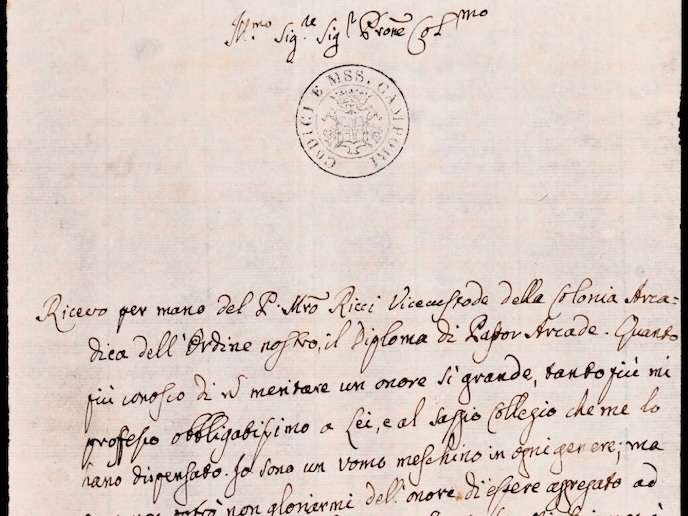How correspondence creates artistic communities
Giambattista Martini (1706-1784) was one of the most prominent and multifaceted figures in 18th century European music. A Franciscan friar from Bologna, he was a theorist, historian, composer, collector and internationally renowned music teacher. “Martini built a European musical network that reflects the dynamic interconnection of cultural, artistic and intellectual life in the 18th century,” explains MARTINET(opens in new window) Marie Skłodowska-Curie global fellow Riccardo Castagnetti from the University of Modena and Reggio Emilia(opens in new window) in Italy. “I wanted to get deeper insights into not only Martini’s influence, but also the broader ecosystem of 18th century European music, including issues of training, repertoire dissemination and the social role of music.”
Historical, philological and digital tools
To achieve this, Castagnetti conducted extensive archival research into Martini’s letters and correspondence in public and private collections across Europe and the United States. Supported by the Marie Skłodowska-Curie Actions(opens in new window) programme, he was able to spend time at Harvard University(opens in new window). “I was fortunate to work with two extraordinary supervisors whose guidance proved invaluable to the development of my methodology,” he says. “I used historical, philological and digital tools to identify authorship, chronology and provenance, and to interpret the content of various letters. This enabled me to classify different types of correspondence and the social dynamics they imply.” One of the most innovative aspects of the project was the application of social network analysis (SNA) to model Martini’s epistolary network. “SNA is a mathematical and scientific tool that is often used to study large-scale networks, such as social media interactions,” Castagnetti explains. “My idea was to apply this tool to analyse patterns in correspondence networks from the 18th century.” SNA made it possible to uncover patterns of interaction, identify central figures within the network, and detect thematic clusters related to issues such as music pedagogy, performance practice and cultural identity.
Navigating ecclesiastical and secular power structures
Castagnetti was able to show that, far from constituting a passive archive, Martini’s letters functioned as tools for shaping reputations, mentoring students, curating a public image and navigating both ecclesiastical and secular power structures. The project also identified letters from previously unknown correspondents, thereby expanding our understanding of Martini’s reach. Another major achievement has been the development of a searchable, annotated digital index that maps these relationships and themes. This will allow scholars to query the data and explore connections in new and meaningful ways. “The correspondence reveals how music functioned not only as an art form but also as a social practice,” adds Castagnetti. “The findings also underscore the role of communication technologies – specifically the letter – in shaping intellectual and artistic communities, much like digital networks do today.”
Digital humanities and network analysis expertise
Castagnetti believes that the project has significantly broadened his methodological expertise, particularly in digital humanities and network analysis. “On a personal level, the research has deepened my understanding of how musicians and scholars shaped their careers – an insight that resonates strongly with contemporary academic life,” he remarks. Moving forward, Castagnetti hopes that this work will serve as a foundational resource for future scholars in musicology, cultural history and digital humanities. Making Martini’s correspondence accessible, searchable and analysable in new ways can provide a model for similar projects on other historical figures. “Ultimately, I hope to have contributed to a broader rethinking of how letters illuminate the social infrastructure of knowledge and creativity in early modern Europe,” he concludes.
Keywords
MARTINET, artistic, musical, intellectual, philological, historical, secular







